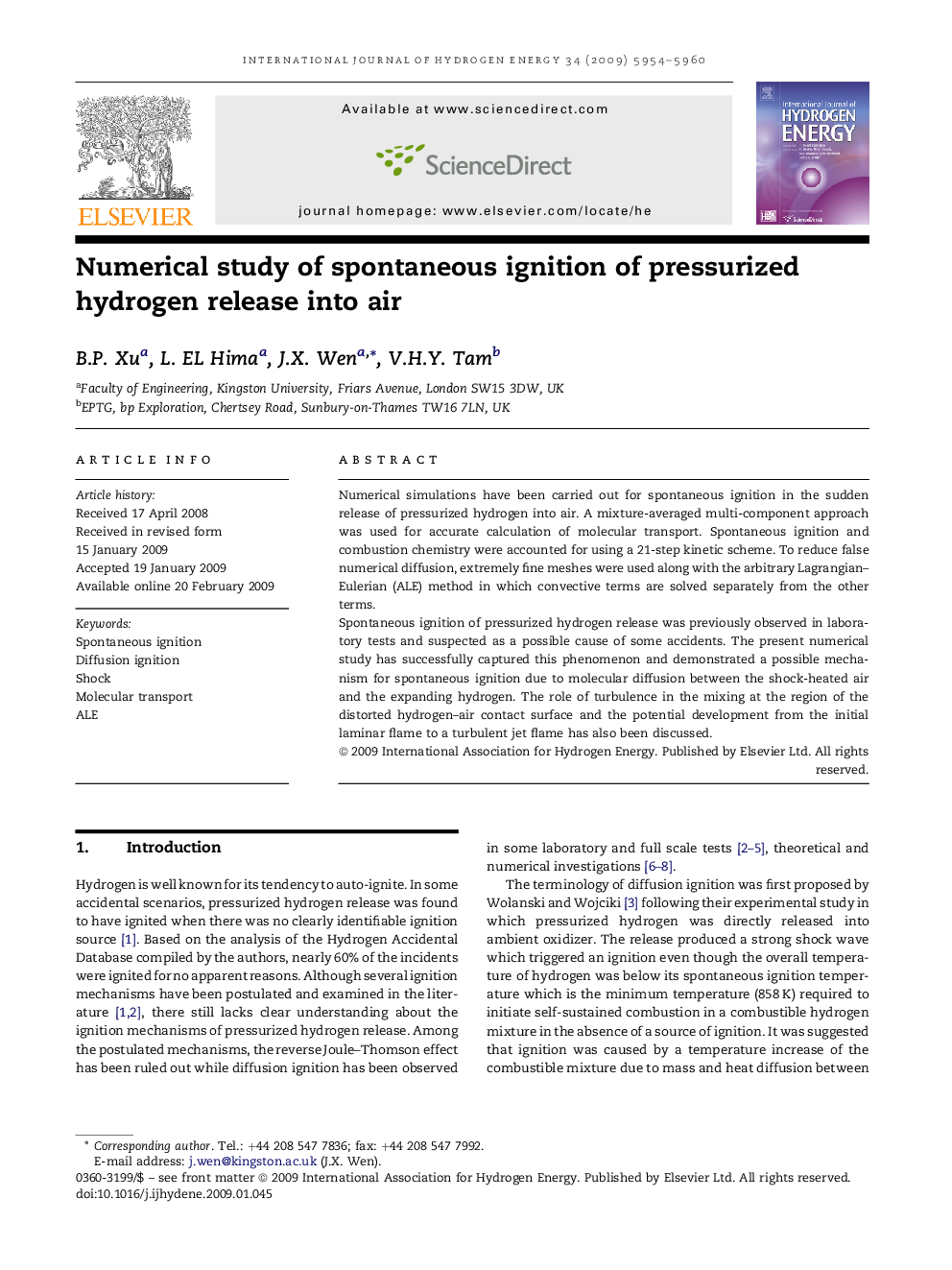| Article ID | Journal | Published Year | Pages | File Type |
|---|---|---|---|---|
| 1273730 | International Journal of Hydrogen Energy | 2009 | 7 Pages |
Numerical simulations have been carried out for spontaneous ignition in the sudden release of pressurized hydrogen into air. A mixture-averaged multi-component approach was used for accurate calculation of molecular transport. Spontaneous ignition and combustion chemistry were accounted for using a 21-step kinetic scheme. To reduce false numerical diffusion, extremely fine meshes were used along with the arbitrary Lagrangian–Eulerian (ALE) method in which convective terms are solved separately from the other terms.Spontaneous ignition of pressurized hydrogen release was previously observed in laboratory tests and suspected as a possible cause of some accidents. The present numerical study has successfully captured this phenomenon and demonstrated a possible mechanism for spontaneous ignition due to molecular diffusion between the shock-heated air and the expanding hydrogen. The role of turbulence in the mixing at the region of the distorted hydrogen–air contact surface and the potential development from the initial laminar flame to a turbulent jet flame has also been discussed.
